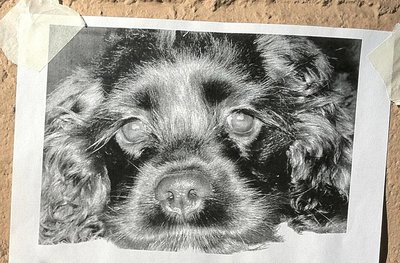
While strolling around Eugene, if you look closely enough among the concert posters, job postings, graffiti and other ephemera tacked to poles, you may notice the heartache and hidden poetry of missing pet notices.
According to Douglas Beauchamp, former director of the Lane Arts Council, that’s what public art is all about: looking at the world around us. Beauchamp has been a panelist and project manager for various public art projects in Eugene and these days, he brings his point-and-shoot camera with him wherever he goes. Two years ago, fascinated by the emotion and urgency of missing pet fliers, he began his own collection on his Flickr account.
“It’s not about pets, directly,” Beauchamp says. “I want to start a dialogue about the larger context of loss, public display, looking at our environment and respecting it.”
Beauchamp has one album featuring notices for canines — such as the wrinkled face and large, longing eyes of a caramel pug named Leo — and another for felines — like the small black cat named Willow that was photographed resting in a bookshelf. While the fliers can degrade depending on weather or how they were made, he feels that this distortion can often lend itself to the poetry of his documentations.
“The images go through significant changes to tell the story of absence, loss, hope and yearning,” Beauchamp adds. “The spectral quality of the imagery became a metaphor for the loss of the pet.”
Beauchamp does not seek out these fliers, but when he does find them, he captures the moment by photographing the poster within its physical context and background, snapping a close-up image of the flier itself or a close-up of whatever text is included.
He feels that there is a “connection” established by the viewer to what the owner or the pet must feel in these situations. Beauchamp also describes a characterization of the pet that often make them seem human. One owner, for example, explained that her tuxedo cat “likes to talk. He can say these words — mama, meow-meow, out-out, ouch.”
Beauchamp hasn’t figured out the purpose that he hopes to communicate with these particular photographs, and is undecided about whether he will make the images public. He does, however, appreciate the “unedited poetry of loss and yearning” to be found in the public notices of a missing pet.
Beauchamp also runs rockartoregon.com where he post photographs of the archeology related to rock art and desert landscapes.